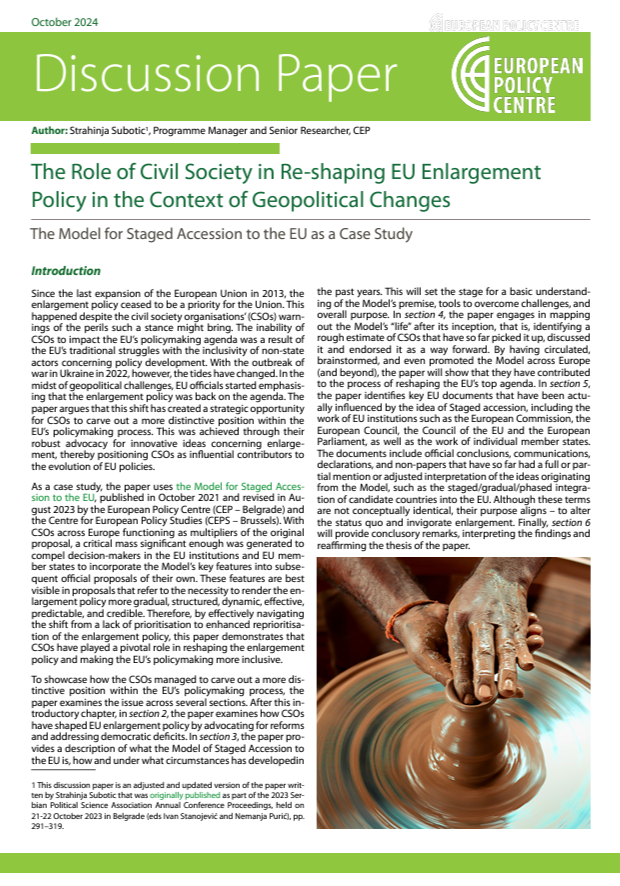Headquarters: Svetog Nauma 7, 11000
Office address: Đorđa Vajferta 13, 11000
Phone:: +381 11 4529 323
The Western Balkan countries (WB6) have long been entangled in a protracted stalemate in their quest for European Union membership. However, recent geopolitical shifts caused by Russia’s attack on Ukraine have thrust the enlargement process back on the EU’s agenda as one of the Union’s highest priorities, injecting new vigour into the process.
In the Spring of 2024, the European Parliament and the Council adopted the Regulation establishing the Reform and Growth Facility for the Western Balkans. This milestone also marked the official acceptance of the Growth Plan for the Western Balkans (Growth Plan), a strategic initiative presented in the fall of 2023 aimed at revitalising the enlargement process and reducing the economic disparity between the WB6 and the EU. Among other things, it proposed incentives in the form of early integration into the single market by providing access to various EU initiatives such as programmes, agencies, joint alliances, and more. It was done with the aim to facilitate more opportunities for closer association with the EU’s single market already during the pre-accession period.
Building upon the Model for Staged Accession to the EU, which underscores the need to provide increased incentives linked to the level of accomplished reforms, this paper aims to assess whether and to what extent the Growth Plan’s initiatives can serve as viable incentives for the WB6 governments to implement necessary reforms. The underlying thesis posits that while the proposed incentives add value to the accession journey, they fall short of serving as compelling motivators for the WB6 to enact reforms, particularly considering their accessibility prior to the formulation of the Growth Plan.
Therefore, their effectiveness depends on the successful implementation of other Growth Plan components, particularly increased and conditional funding, and the introduction of institutional participation as an additional incentive.


